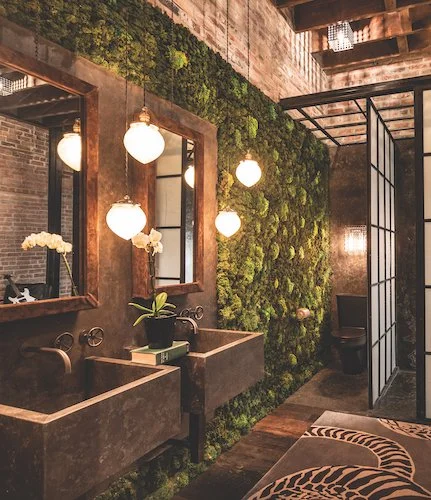With The Good Business Festival taking place in Liverpool this week it felt timely to think about sustainability in design and what that means to us here at The Looking Glass.
It has been on our minds at THG towers just recently as we are in the process of drafting our sustainability policy. Not an easy task as it turns out, as Kermit the Frog once put it, it’s not easy being green!
Whilst we endeavour to specify pieces that are made sustainably and from someone local, this isn’t practical for every project as each will have it’s own constraints of time and budget. With that in mind it’s clear we have to think wider about what sustainability means.
For us it means working with developers and housing providers who are building sustainable communities, not just houses. It means running a viable business that creates reliable jobs with fair wages to sustain incomes. It means using a ‘green bank’ for our transactions in hope that our money helps accelerate the shift to clean energy and wherever possible specifying items that are produced locally, helping to sustain our community.
You may be wondering what design choices you can make if you want to live more sustainably. The obvious place to start is to ask yourself if you need anything new at all. Is your furniture in working order and fit for purpose? Old pieces can be upcycled if you want to give them an to up to date look, furniture can be painted, couches can be reupholstered, lampshades can be re-covered. Before you head out spending your hard earned cash, it’s always worth considering if you need to! If you don’t have the time or skillset to upcycle yourself then have a look at who does and hire them. For a fraction of buying new you will have saved a piece from landfill, avoided more consumption of raw materials and energy in the making of a new piece and provided income to a local craftsperson – all in one go! We work with a local charity The Big Help Project on upcycling some of the donated furniture that ends up in their warehouse. Ahead of these items going in to their high street shops to be sold we give them a makeover, hopefully making them more appealing as a one-off item that will sell for a little extra than normal. Here’s a few examples below:
As an added bonus we used recycled paint from Painting Green for these projects – a wonderful initiative which collects old unused paint which is filtered and re-coloured to be sold as a new tin of paint at a fraction of the cost. This stops paint going to landfill and again means we are using what has already been made instead of manufacturing new paint. Recycled paint is available as emulsion and chalk furniture paint.
If you do need something new think about what you’re buying, is it good quality designed to last decades and made from sustainable sources? How far has it travelled to get to you? Is there a furniture maker nearby that you can spend your precious money with?
I think the main point to takeaway is to acknowledge that none of us are going to be able to make the most sustainable choice all of the time, but we can at least be mindful of the choices we are making, a small change here and there has got to help in the long run hasn’t it?









